Trenton soup kitchen artists embrace opera
-
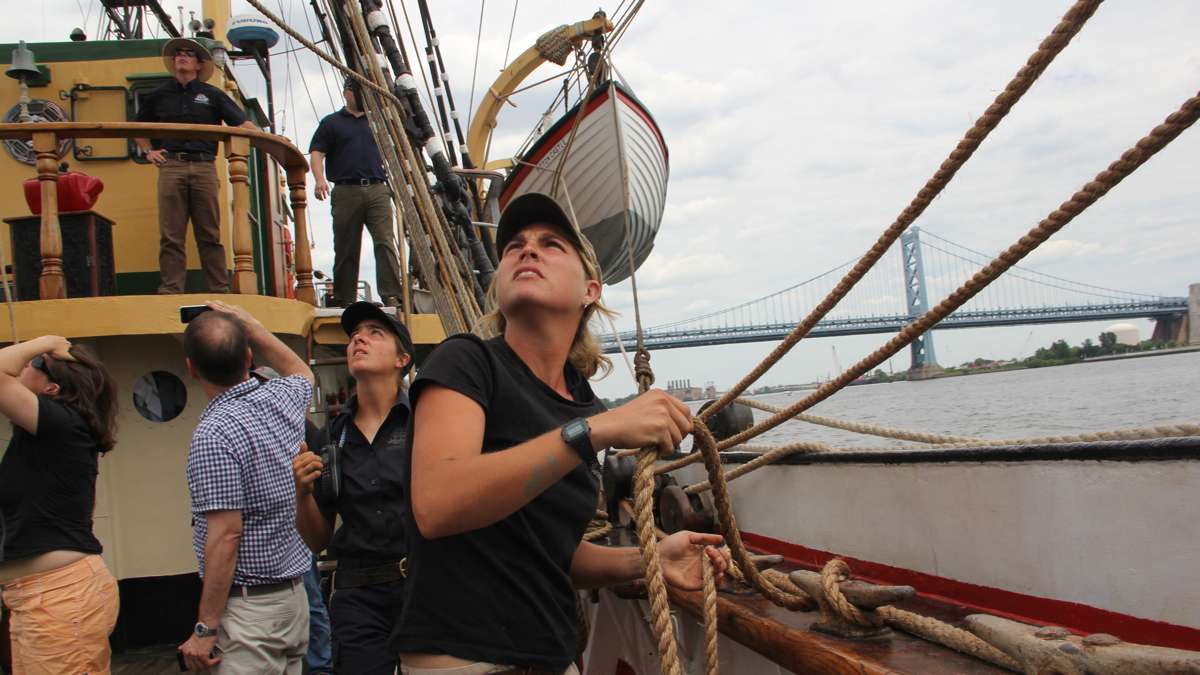
Bos'n Erin Greig checks the lines as the Picton Castle gets underway leading the Parade of Ships in the Tall Ships Festival on the Delaware. (Emma Lee/WHYY)
-

The ship's crew wear their tools everywhere, including fixed-blade knife, marlin spike and harness for security in the rigging. (Emma Lee/WHYY)
-
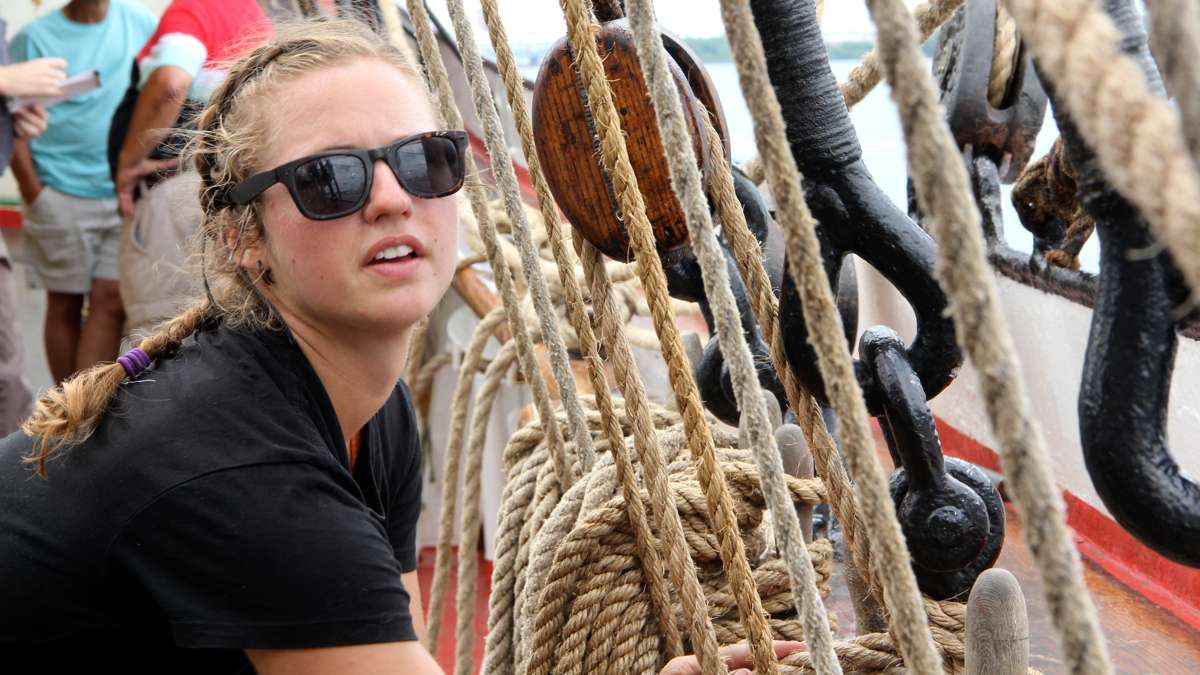
Rebecca Prasher secures the lines on the Picton Castle as it leads the Parade of Ships on the Delaware. (Emma Lee/WHYY)
-

The ship's cat makes a brief appearance above decks. (Emma Lee/WHYY)
-
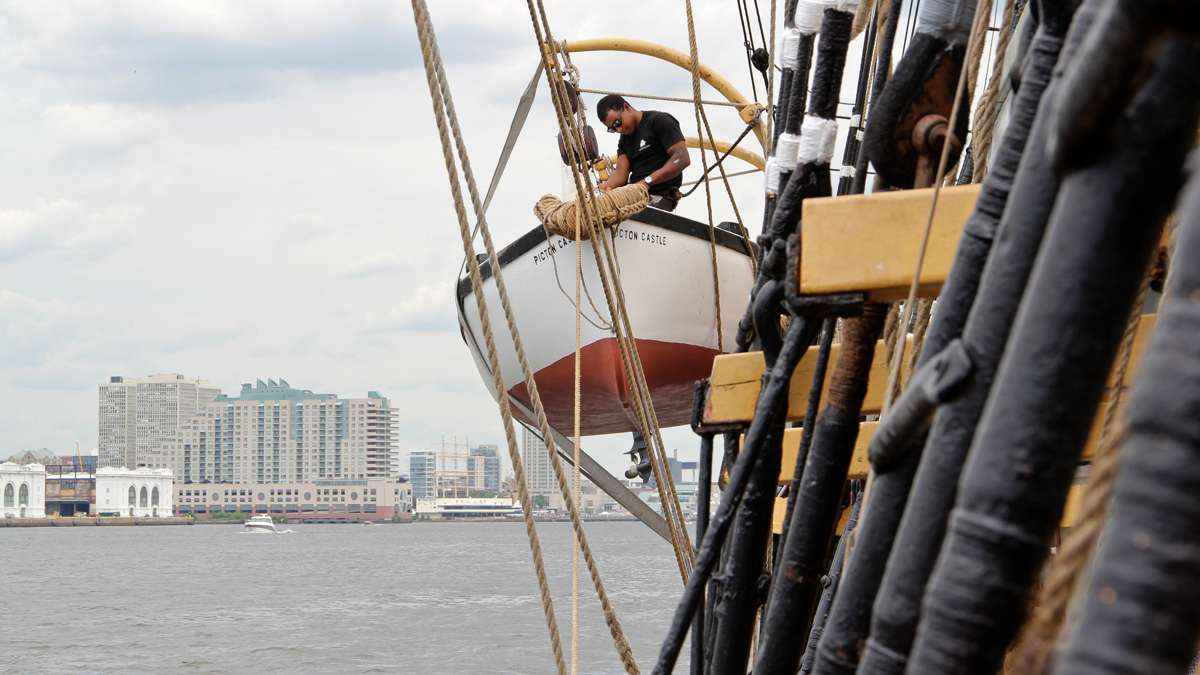
Gabe St-Denis looks after the ships tender aboard the Picton Castle as it arrives in Philadelphia. (Emma Lee/WHYY)
-
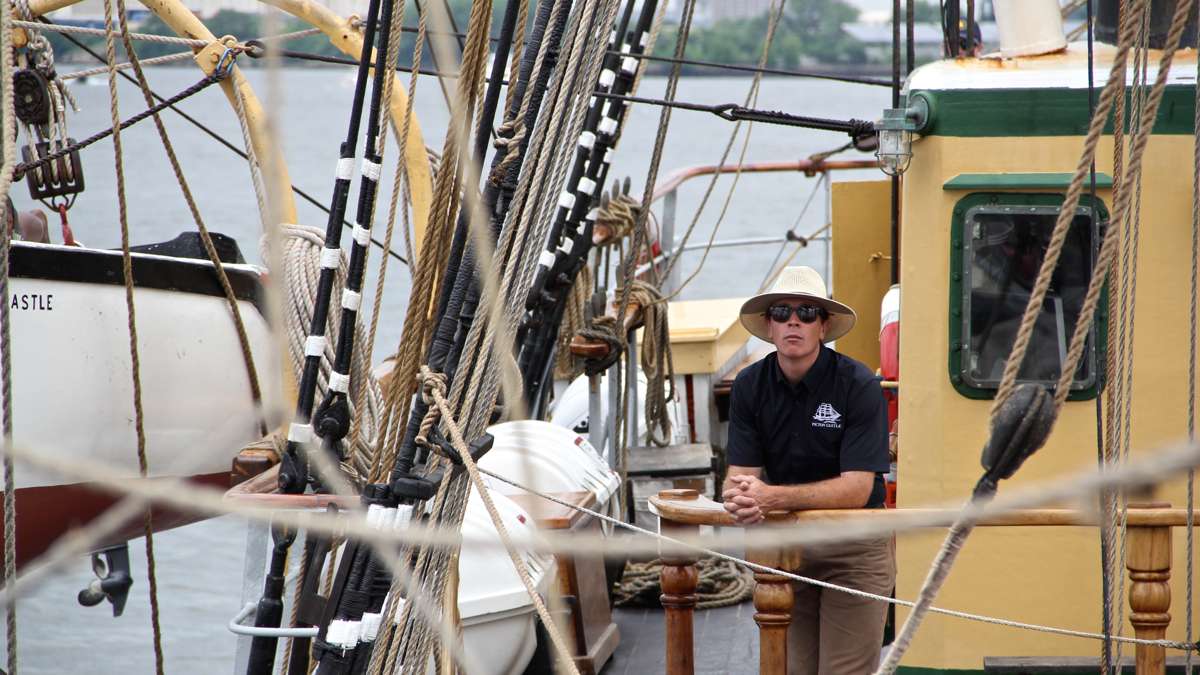
Capt. Sam Sikkema guides the Picton Castle as it cruises up the Delaware River. (Emma Lee/WHYY)
-
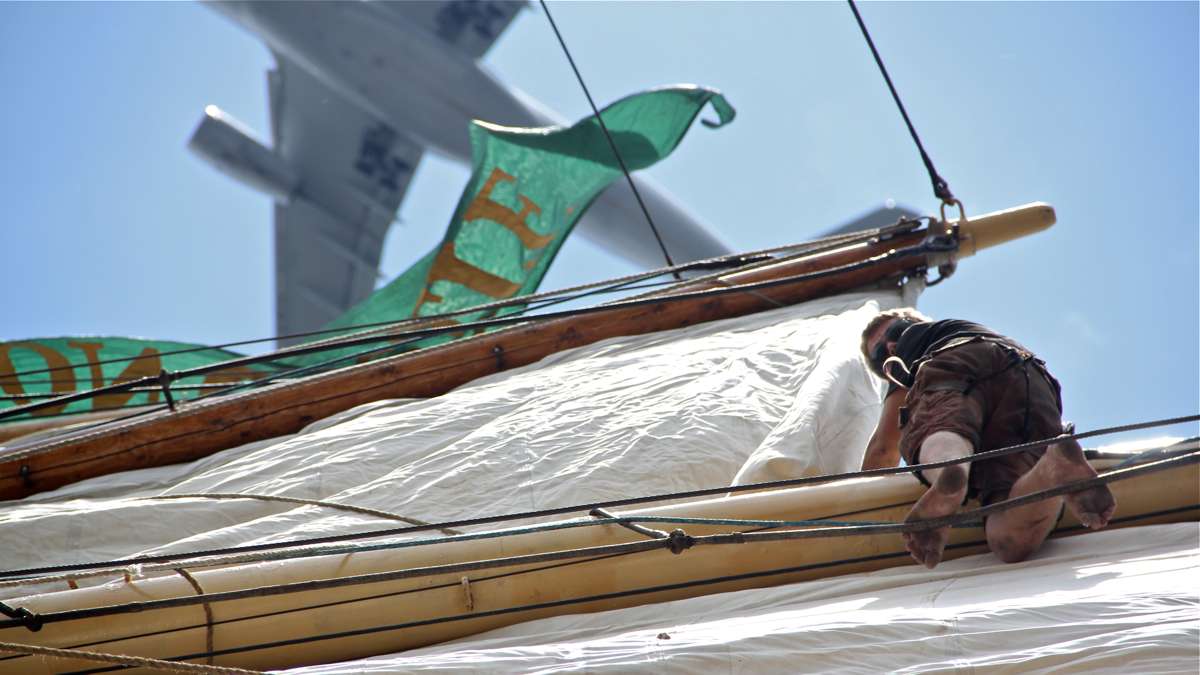
Emil Visby climbs high into the rigging to free a sail. (Emma Lee/WHYY)
-

Crew members haul up sails as the Picton Castle leads the Parade of Ships at the Tall Ships Festival. (Emma Lee/WHYY)
-

The barque Picton Castle is a three-masted tall ship based in Lunenburg, Nova Scotia. Known for training sailors, it has been around the world six times. (Emma Lee/WHYY)
-

The Tall Ships make their way up the Delaware for a four-day festival in Philadelphia and Camden. (Emma Lee/WHYY)
-

The Tree of Life, a gaff-rigged schooner from Newport, R.I. (Emma Lee/WHYY)
-

The tall ships arrive for a four day festival in Philadelphia and Camden. (Emma Lee/WHYY)
-

Small pleasure boats gather under the Ben Franklin Bridge to watch the arrival of the tall ships. (Emma Lee/WHYY)
-

Erin Greig hangs from the rigging of the Picton Castle as she frees some lines. (Emma Lee/WHYY)
-

The Gazela, a barquentine ship whose home port is Philadelphia. (Emma Lee/WHYY)
-
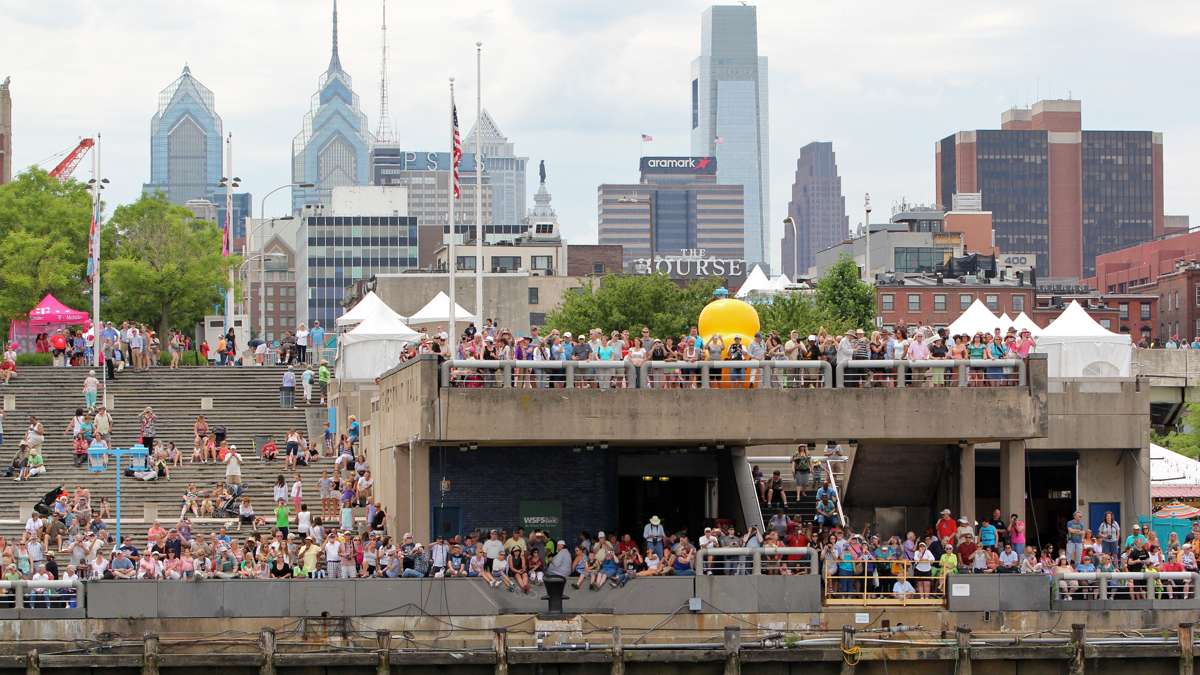
Crowds gather near the Independence Seaport Museum to watch the tall ships arrive in Philadelphia. (Emma Lee/WHYY)
-

The U.S. Coast Guard barque Eagle from New London, Conn. (Emma Lee/WHYY)
-
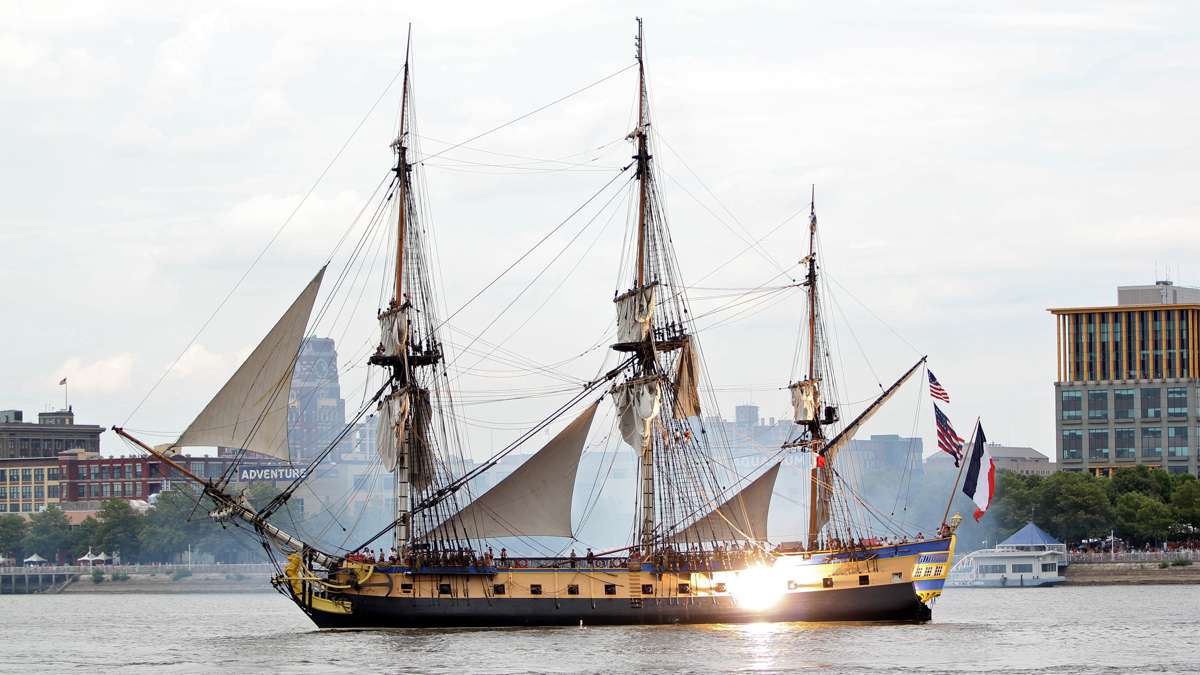
L'Hermione, a replica of the Marquis de Lafayette's 18th century ship fires her cannons as she arrives for the four-day Tall Ships Festival in Camden and Philadelphia. (Emma Lee/WHYY)
-
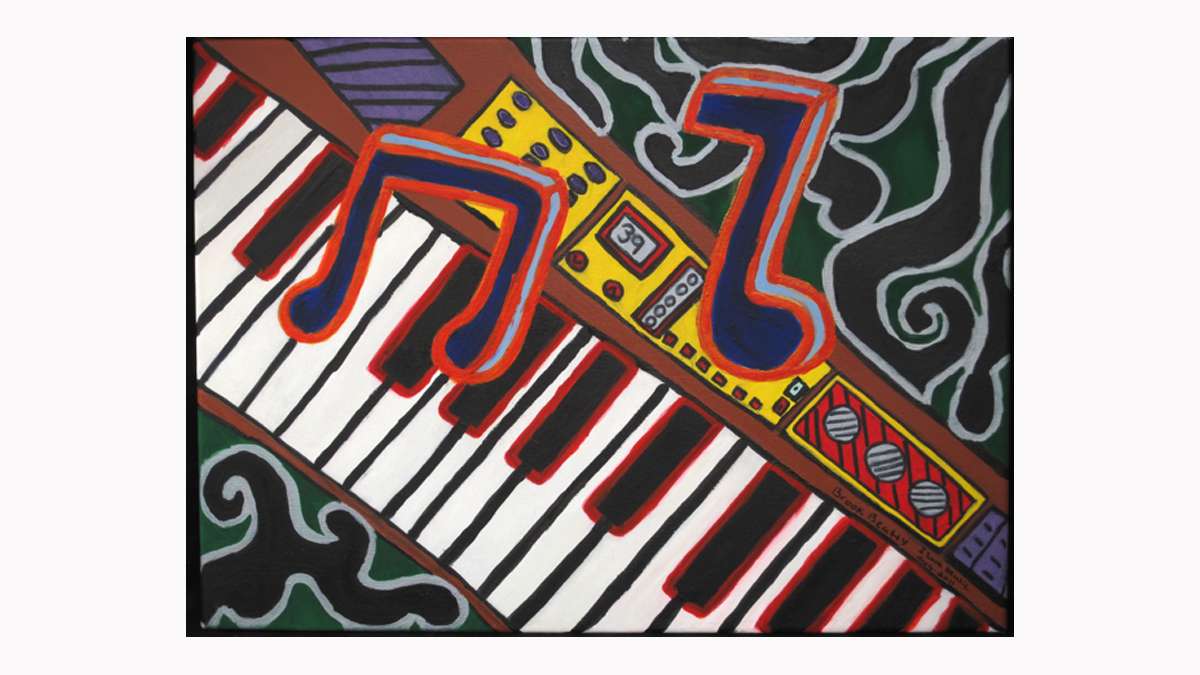
-
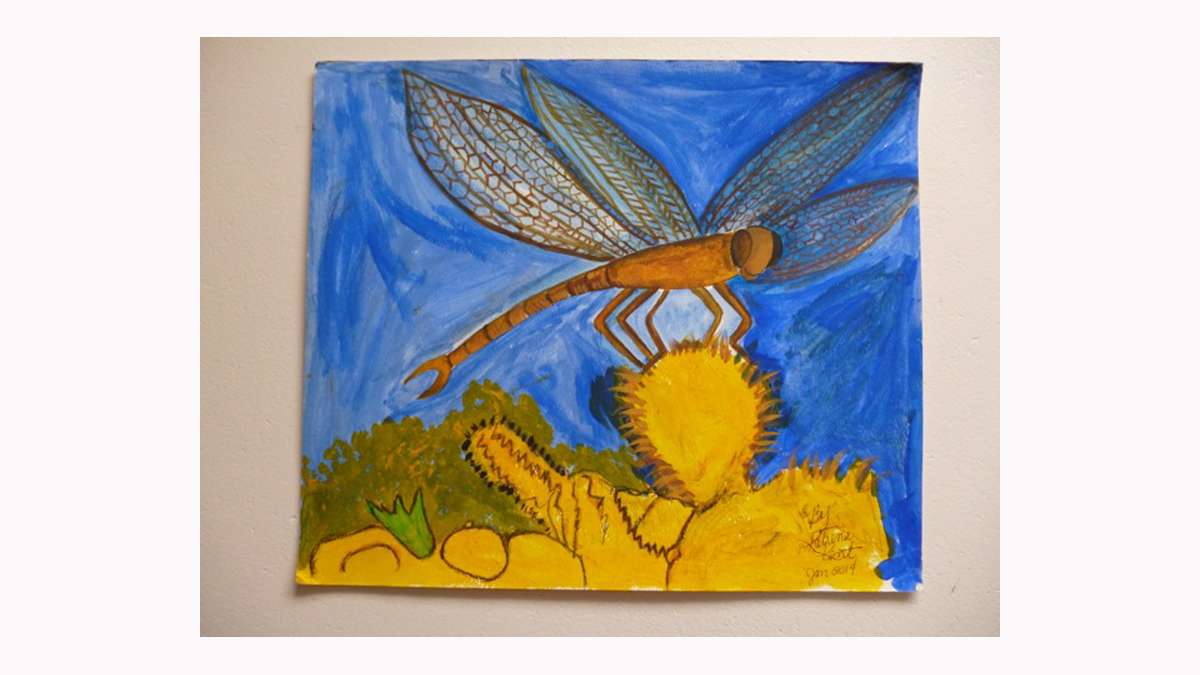
-

-

-
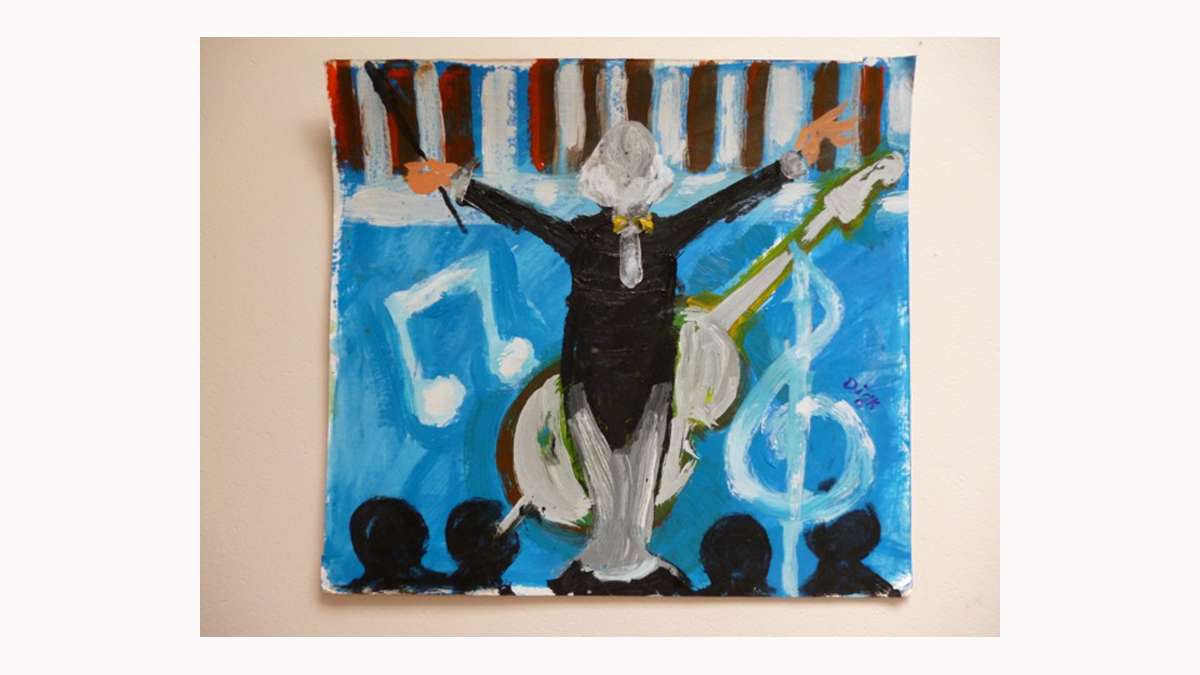
Even among those who are educated and well off, opera can be an acquired taste. For the Trenton Community A-Team artists of the Trenton Area Soup Kitchen, the experience of opera may be even farther off. Thanks to a collaboration with the Princeton Festival, the A-Team artists have embraced opera for an exhibit that runs through June 30 at Thomas Sweet Café, Montgomery. Located next door to the Montgomery Cinema on Rt. 206, the café is frequented by the art house cinema crowd.
The Princeton Festival is committed to making opera more accessible, and the month-long series of events each June includes jazz and musical theater, Baroque and Chamber music, a cappella and choral music, as well as classical opera. This year’s program included Country and Indian music. Kerry Perretta of the Education and Outreach Committee of Princeton Festival organized the exhibition of A-Team artists to help make the festival more inclusive and help get the word out.
Outsider artists work best when expressing something from within, and don’t do as well when given a theme, says Susan Darley, a psychologist and volunteer at the soup kitchen since the 1980s who brought the A-Team Artists together in 2001 as part of the soup kitchen’s Extra Helpings program. She’s been the committed de facto leader ever since, working with the self-taught artists one day a week. The artists use donated art supplies and are supportive of each other. Each week Darley rearranges the densely packed display of artwork, making use of every possible space on the walls – including in storerooms. She spends her weekends scouting out gently used frames at yard sales, and the rest of her time framing the artwork and arranging exhibits in the greater Princeton area. There is a rotating selection of A-Team artwork displayed year round at Princeton Historical Society’s Updike Farm and other recent exhibits in Lambertville and West Windsor. The group has grown to include poets and the Funktastics, musicians of the A-Team – both perform at exhibition openings.
A-Team artists also learn business skills through monthly meetings where they plan exhibits, discuss policymaking, budgetary issues, and each other’s artwork. Visits from local artists and other guests are planned, as well as occasional field trips.
Through Darley’s support, many of the A-Team artists have found meaning in their lives through the artwork they do. They are accustomed to things being given to them – housing and food, Darley says. So they derive great joy from having the ability to give something to others, such as their artwork. On a recent day at the soup kitchen’s Escher Street facility in Trenton, one member was carving the names of family members in block letters into wooden walking sticks, presenting a new format for family trees. In one, the letters were formed in bark, around which he carved to the bare wood.
Another member, with long gray braids and a colorful African-inspired scarf and dress, painted dancers that were dressed much as she was.
Yet another artist, “the dot guy” – Patrick Bowen — created city scenes from dots painted in acrylics.
At the Thomas Sweet Café, there is a painting by Emery Williams of “Mozart and Wife.” The wigged composer and his similarly white-haired bride are dressed in their opera finery – she wears pearls – and are presented under the ornate ceiling of a grand rotunda.
Derrick Branch’s “Maestro” – also wearing white wig and raising his baton – elicits musical notes and a clef sign – we can almost hear the applause that follows, from the silhouettes of heads at the bottom of the painting.
The remaining artwork is about music in general. Birds, after all, are among the finest singers, and A-Team artists love to paint birds as well as butterflies (“Madame Butterfly?”) and a magnificent dragonfly by Katrina Kent, whose costume rivals those in this year’s Princeton Festival production of The Marriage of Figaro.
“Another Master” by Walter Roberts looks like Beethoven… or could it be Elvis?
Many of the paintings are about jazz – a horn player, drummers, a woman with swinging dreadlocks boogying with her tuxedoed top-hatted dance partner, and “Bald Headed Band” – a magnificent depiction of an all African-American band. The musicians seem to have departed the physical world and ascended to the realm they’ve created through their music.
There are colorful paintings of keyboards and guitars, bodies in rhythm, and abstract works that relate to jazz. Dorothy Edwards paints two feet with red ballet shoes and legwarmers en pointe, and Carol Johnson gives us a prima ballerina falling into her partner’s arms, her pink tutu glittering with gold.
Most of these artists are African American, yet the musicians they depict are white and black, with the classical musicians tending toward the white and the jazz musicians tending toward black. Carol Johnson, who started painting in 2009 after the hurricane in Haiti, shows us a pair of white students wearing black orchestra attire bowing violins alongside a younger, shorter darker skinned girl on a stool to bow her bass fiddle.
“I felt a lot of love for the Haitian people,” says Johnson. “As a child, I wasn’t hugged a lot. I felt like I was the black sheep of the family. With my artwork, I feel loved.”
Outsider artists experiment with whatever materials are on hand. To create “No Hoods,” Diane Clark uses the ripples of corrugated cardboard painted bright yellow, pink, turquoise and berry to create dancers.
The framed artwork is attractively priced at $100, with proceeds going to the artists. There will be an opportunity to meet the artists on Tuesday, June 30, 2-4 p.m.
___________________________________________________
The Artful Blogger is written by Ilene Dube and offers a look inside the art world of the greater Princeton area. Ilene Dube is an award-winning arts writer and editor, as well as an artist, curator and activist for the arts.
WHYY is your source for fact-based, in-depth journalism and information. As a nonprofit organization, we rely on financial support from readers like you. Please give today.





